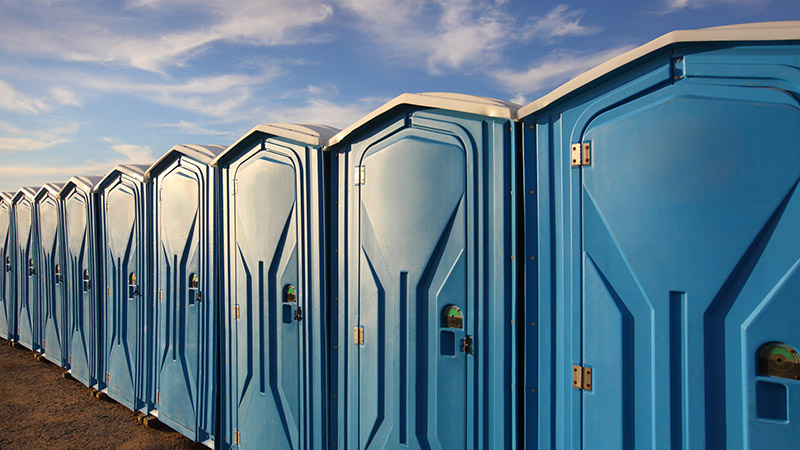
The loss of clean running water or loss of a functional sewer system after a disaster can dramatically increase the chances of diarrheal diseases and outbreaks. Just one gram of human feces may have 100 parasite eggs, 1,000 parasite cysts, 1 million bacteria, and as many as 10 million viruses! With this risk all around us, it underscores the importance of staying clean and disposing of human and other waste properly after a disaster.
Pathogens that may present a risk after a disaster include Escherichia Coli (E. Coli), Leptospirosis, hepatitis A, norovirus, and in some situations Vibrio cholerae and Salmonella enterica. Exposure to disease causing pathogens may occur as a result of contaminated water, sharing of water containers and cooking equipment, or the loss of basic sanitation such as the ability to wash hands thoroughly. Even brushing your teeth with water that is not safe for consumption can result in exposure to pathogens.
Avoiding exposure to these pathogens starts with a careful assessment of water quality following a disaster. Because municipal water lines run parallel to sewer lines, even a small break in both lines can result in cross-contamination. Follow guidance from local officials on use of municipal water following a disaster (e.g., shutting off water to house, treating water before use, or flushing system).
Once a reliable, clean water source has been established, emphasis should be placed on two key priorities: a) providing a mechanism for personal hygiene and handwashing and b) managing human waste.
Personal Hygiene and Handwashing
Any questionable tap water used for drinking and personal hygiene (hand-washing, brushing teeth) must be boiled or otherwise disinfected. If water is not available, a hand sanitizer with at least 60% alcohol content may be used for cleaning hands. However, hand sanitizer is not effective for visibly soiled hands. Consider keeping some wet wipes to clean hands first before use of hand sanitizer when hands are soiled and no water is available.
When should we wash or sanitize hands?
1. After exposure to waste:
- After using the toilet
- After changing a diaper
- After touching an animal or animal waste
- After touching garbage
2. When there may be exposure to illness:
- After caring for someone who is ill
- After sneezing, coughing, or blowing your nose
3. When something should be kept clean:
- Before, during, and after food preparation
- Before eating
- Before and after caring for a wound or cut
Proper handwashing:
- Wet hands and apply soap
- Rub and scrub for at least 20 seconds
- Rinse well under running water
- Dry with a clean towel or air dry.
Rinsing hands after soaping and scrubbing can be difficult without running water, but is essential to washing away pathogens. A hand washing station can be established by using a large water container with a spigot, or constructed from multiple buckets and some basic supplies from the hardware store (see resources for link to detailed instructions). Alternatively, a water bottle with a sport top or bike water bottle can be used to dispense water for rinsing hands. Keep some paper towels handy to hold the water bottle to keep it clean, or have someone else dispense the water while rinsing.
Human Waste Management
In a disaster, toilets may be unusable because of a lack of running water or breaks in the sewage line. There are two situations that might exist:
- Toilets are available but cannot be flushed (no water or broken sewer lines)
- Toilets are not available (damaged or inaccessible)
Toilet available but cannot be flushed:
When a toilet is available, but cannot be flushed, it can lined with a plastic bag and used as a commode. This works best when the water is removed from the toilet bowl first. For solid waste, a small amount of disinfectant can be added to the bag after use, if available. Diluted liquid chlorine bleach at a 1:10 bleach to water ratio, or powdered, chlorinated lime are suitable disinfectants. After use, remove the bag, seal or tie it closed, and carry it outside and place in a closed container away from people. Keeping a small bucket next to the toilet will make carrying the bag outside easier! Human waste should not be disposed of with regular the trash; however, a heavy duty trash bag can be used to line a trash can and all waste bags placed inside the larger bag, or one bin can be designated for human waste can be if multiple bins are available (e.g., green waste bin). The city will later provide a means for disposing of this waste.
Toilet not available:
When a toilet is not available due to damage or evacuation, some additional supplies will be needed to create a makeshift toilet. An easy and inexpensive solution is to obtain a five gallon plastic bucket commonly available at home improvement stores. Seat lids can also be purchased which snap on top of the bucket, creating a makeshift toilet. Use a plastic bag to line the bucket, which will make it easy to disinfect and dispose of waste outside in a heavy duty trash bag for the city to pick up later. Portable or camp toilets can also be purchased at camping stores or online; however, there must be a clear mechanism to empty and maintain these camp toilets as they fill up.
If all this sounds like too much work, commercially made waste bags that contain a powdered absorbent and bacterial enzymes that break down human waste allowing the entire bag to be disposed of in regular trash. These bags can be purchased from disaster supply vendors and online. You will still need a bucket and seat lid, for when a toilet isn’t available.
Best practice:
When shopping for buckets and seat lids, consider buying two of each so you have one for urine and one for feces. This is known as a “twin bucket” system. Urine is generally sterile and can be disposed of into the soil or even into the storm drain in an emergency, whereas feces contain the bulk of bacteria and must be handled and disposed of with special care. By keeping them separate, you will significantly reduce the volume of waste that has to managed, as well as minimize the odor that results when urine and feces mix together. When set up properly, the twin bucket system will provide sanitation for quite some time!
When using a twin bucket system, feces can be covered with a carbon material, such as sawdust, wood chips, coffee husk chaff, or very finely shredded paper. This will help to manage odors and help the feces to break down, and is a convenient alternative to bagging and removing waste after each use. The bucket can still be lined with a plastic bag (and then used multiple times before removal), or the bucket can be used without a plastic liner and simply capped when full.
Emergency Sanitation Supplies
A disaster sanitation kit should include a seven day supply of:
- Toilet paper
- Towelettes/wet wipes
- Soap or liquid detergent, and liquid hand sanitizer
- Feminine supplies
- Personal hygiene items
- Plastic garbage bags, ties
- 5 gallon plastic bucket(s) with tight lid
- Plastic seat top for 5 gallon bucket
- Disinfectant, such as household bleach or powdered chlorinated lime (optional)
- Carbon material such as sawdust, wood chips, or coffee husk chaff (optional)
Resources
Loma Linda University Health does not endorse any specific website or vendor. However, the following websites are provided for additional information and as examples of best practices and local/online vendors for emergency food supplies.
Information
- Personal Hygiene and Handwashing After a Disaster or Emergency - CDC
- The Twin-bucket Emergency Toilet - PHLUSH Advocacy Group
- Have a Toilet Plan - Public Alerts
Vendors
- Toilet Seat for 5 Gallon Bucket – Amazon
- Sanitation Kits – Simpler Life







